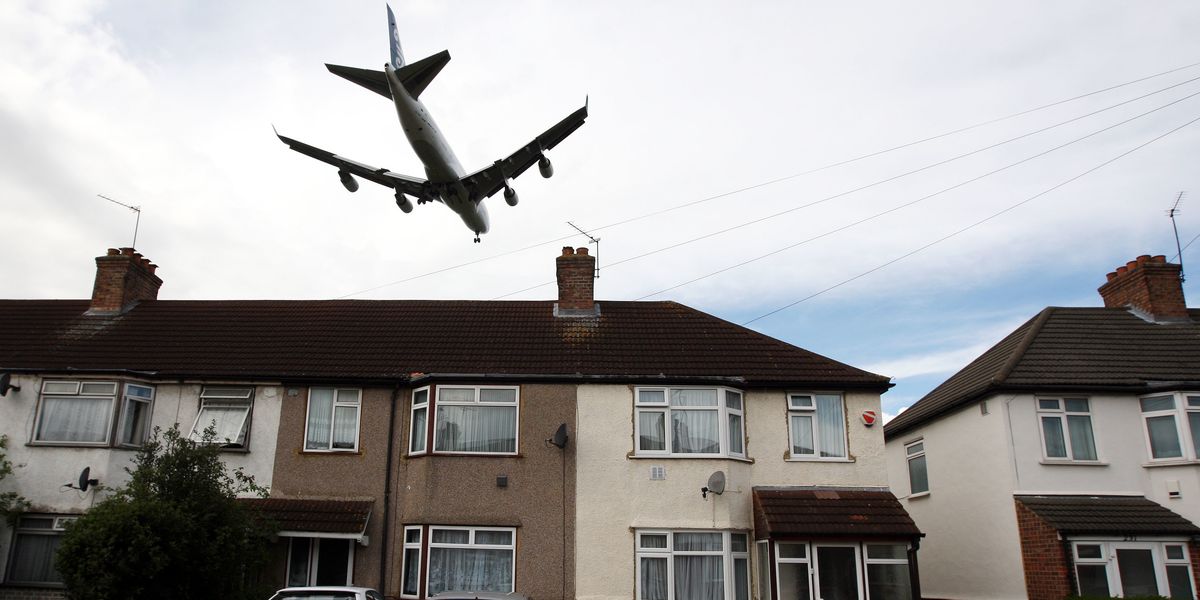The Struggles of Living Under a Flight Path: A Homeowner’s Battle with Heathrow Airport
In the picturesque landscape of the English countryside, a £3 million Georgian mansion stands as a testament to history and elegance. However, for Daljit Bhail, the homeowner of this stunning property, the charm of his residence is overshadowed by the constant roar of low-flying planes from nearby Heathrow Airport. Bhail’s grievances highlight the ongoing conflict between residential life and the operations of one of the world’s busiest airports.
A Home Under Siege
Daljit Bhail, a 54-year-old homeowner, has lived adjacent to the south runway of Terminal 5 for nearly 25 years. Over the past three years, he claims that the increasing frequency of low-flying aircraft has led to significant damage to his home. Bhail alleges that the powerful wind gusts generated by these planes have caused tiles on his roof to shift, leading to potential structural issues. His concerns extend beyond mere aesthetics; he fears for the integrity of his historic home.
Moreover, Bhail has reported incidents of "blue ice" — frozen sewage leaking from aircraft toilets — which he claims has caused damage to a glass lantern outside his property. These incidents have not only affected the physical state of his home but have also disrupted his quality of life.
The Impact of Noise Pollution
In addition to the physical damage, Bhail has expressed frustration over the noise pollution caused by the aircraft. He reports that he and his guests, who often rent the property through Airbnb, are frequently awakened at 3 AM by the sound of planes flying overhead. This disruption has transformed what should be a peaceful retreat into a source of stress and anxiety.
"It’s not just the damage — it’s really loud, and they shouldn’t be flying that low," Bhail stated emphatically. The combination of noise and potential structural damage has led him to describe the situation as "extremely dangerous."
The Response from Heathrow Airport
In response to Bhail’s allegations, Heathrow Airport has denied any wrongdoing. A spokesperson for the airport stated that they have "well-established programmes to protect local buildings from the impacts of airport operations," including preventative measures and noise insulation. They also mentioned that in rare cases of property damage, they work with specialist contractors to assess and carry out necessary repairs at no cost to the resident.
Despite these assurances, Bhail’s experience tells a different story. He claims that while an assessor from Heathrow confirmed that his home had been affected by "vortex damage," the subsequent repair efforts have been inadequate. He alleges that scaffolding has been left in place for five months, with no follow-up from the airport to complete the necessary work.
A Standoff Over Repairs
The situation has escalated into a standoff between Bhail and Heathrow Airport. He asserts that the airport agreed to send someone to secure the roof in April, but he was dissatisfied with the quality of the work performed. "They did a shoddy job," he remarked, highlighting his frustration with the ongoing lack of resolution.
The disagreement has left Bhail feeling abandoned by the airport, which he believes should take greater responsibility for the impact of its operations on local residents. "It’s a stand-off," he lamented, emphasizing the need for a more proactive approach from Heathrow in addressing the concerns of those living in the flight path.
Conclusion: A Call for Action
Daljit Bhail’s plight serves as a poignant reminder of the challenges faced by homeowners living in proximity to major airports. As air travel continues to grow, the balance between operational efficiency and the rights of local residents becomes increasingly critical. Bhail’s story underscores the need for airports to engage with their communities, ensuring that the impacts of their operations are mitigated and that residents feel heard and supported.
As the debate continues, it remains to be seen how Heathrow Airport will address the concerns raised by Bhail and others in similar situations. For now, the roar of low-flying planes remains a constant reminder of the complexities of modern living in the shadow of aviation giants.
